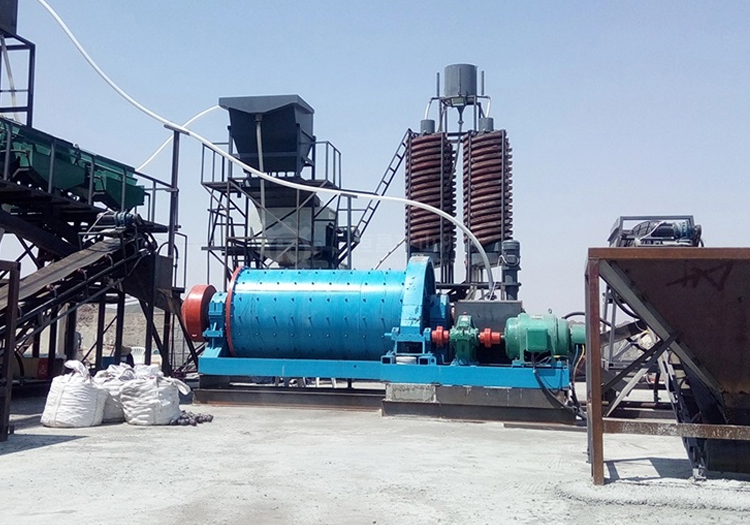Development of crushing and grinding technology
2022-08-01 11:45:23


Crushing and grinding are not only an important process in concentrators, but also an indispensable link in the production of many industrial sectors such as building materials, metallurgy, chemical industry, coal, ceramics and food. The consumption of electricity, steel and raw materials in crushing and grinding is extremely huge. For example, the cost of crushing and grinding in a cement plant accounts for more than 30% of the production cost, and the power consumption of crushing machinery accounts for about 30% of the total power consumption of the whole plant. 70% of the power consumption; the average consumption of each ton of raw ore for non-ferrous metal processing equipment is about 16KW·h, and the average steel consumption is about 1.5kg/t.
Therefore, finding ways to improve the crushing process, improving the technological performance of the equipment, developing new and efficient equipment, and reducing the energy consumption of crushing are the common goals of researchers in many fields, and are valued by countries all over the world.
During the pulverization process, the pulverizing machine must exert a huge force on the material particles to overcome the cohesive force between the particles of the material before it can be fragmented, which requires a certain amount of energy to be input. In order to use the input energy more effectively, find ways to save energy, and improve the working efficiency of the crushing machinery, it is necessary to figure out the law of energy consumption in the process of material crushing, that is, the theory of crushing power consumption. The research in this area has a history of more than 100 years and has achieved many achievements, but until now the theory of crushing is not perfect, and it still needs to be further explored.
At present, the crushing method used in industrial production is still dominated by mechanical crushing. The energy utilization of this method is very low, and most of the input energy is dissipated in the form of heat. According to reports, the electricity utilization rate of the crushing machinery is about 30%, while the ball mill actually used for grinding materials to generate new surface energy only accounts for 0.6% of the total energy consumption, while the heat taken away by the crushed materials and airflow accounts for 78.6%. Therefore, exploring new pulverization methods that are not affected by mechanical force has become an important research topic in the pulverization field.
The new methods that people are working on are ultrasonic crushing, thermal crushing, high-frequency electromagnetic wave crushing, hydroelectric effect crushing and decompression crushing. For the traditional mechanical pulverization method, although the efficiency is not high and the equipment and other drawbacks, it is still widely used after all. Therefore, the improvement and innovation of crushing equipment are also valued. In recent years, new types of crushing equipment have come out, such as impact jaw crusher, ultra-fine crusher, ultra-fine crusher, centrifugal mill, roller mill, multi-cylinder ball mill, jet mill, etc. The development of crushing technology. At the same time of innovation, people are also committed to using new technologies, new materials and new manufacturing processes to improve traditional grinding machinery to improve its reliability and durability, improve its process performance and work efficiency, and reduce its weight. And metal consumption, easy operation and maintenance. For example, the crusher adopts hydraulic technology and large rolling bearings, the ball mill adopts rubber lining plate, angle spiral lining plate, mineral layer magnetic lining plate and ring motor that can adjust the speed, the screen adopts nylon material, and so on.
In order to improve the efficiency of the classification equipment in the grinding circuit and reduce the over-grinding of useful minerals, various new types of fine screens have appeared one after another, such as high-frequency vibrating screens, wet cylindrical screens, cyclone fine screens, etc., which have been used in industrial production to replace The original classification machinery (such as spiral classifier), the effect is very good. At present, in addition to the development of large-scale, high-efficiency, reliable and energy-saving ore crushing and grinding equipment, people also pay more attention to the simultaneous development of mechatronics and electronic control technology. In order to master the rules of crushing, screening and grinding process and improve the process efficiency, people also pay attention to the research on the process, and establish the relevant theories such as screening dynamics, grinding dynamics and grinding medium kinematics . Practice has proved that these theories have practical significance for guiding industrial production.